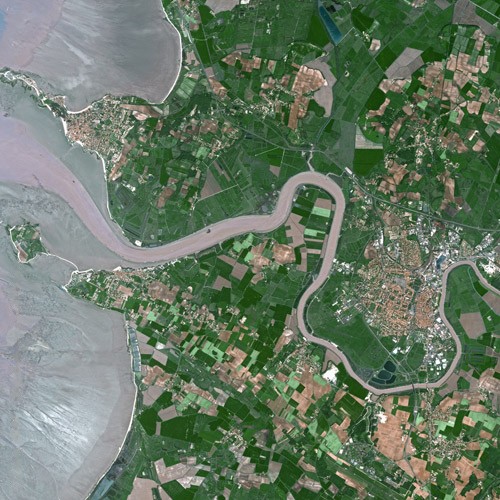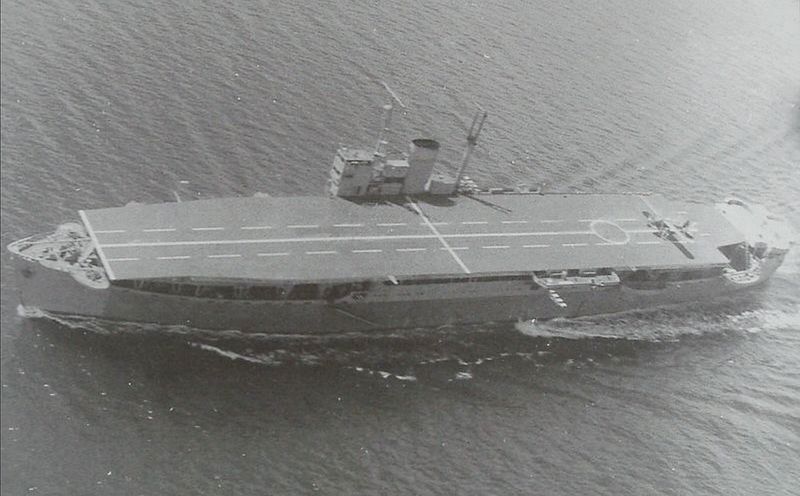|
HMS Bulwark
Seven ships of the Royal Navy have borne the name HMS ''Bulwark'', after the reference to the Navy as the 'bulwark' (defence) of the country: * HMS ''Bulwark'' was to have been a 74-gun third rate. She was ordered in 1778 but was cancelled in 1783. * was a 74-gun third rate launched in 1807. She was previously planned to be called HMS ''Scipio'', but was renamed in 1806 before being launched. She took part in the blockade of Rochefort in 1813 and fought in the War of 1812. She was broken up in 1826. * HMS ''Bulwark'' was to have been an 81-gun screw propelled second rate. She was laid down in 1859, but work was suspended in 1861, and she was eventually cancelled and broken up in 1873. * HMS ''Bulwark'' was previously the planned 110-gun first rate . She was kept in reserve and was renamed ''Bulwark'' in 1885 when she became a training ship. She was renamed HMS ''Impregnable'' in 1886, and then HMS ''Bulwark'' again in 1919. She was sold for breaking up in 1921. * was a launc ... [...More Info...] [...Related Items...] OR: [Wikipedia] [Google] [Baidu] |
Royal Navy
The Royal Navy (RN) is the naval warfare force of the United Kingdom. It is a component of His Majesty's Naval Service, and its officers hold their commissions from the King of the United Kingdom, King. Although warships were used by Kingdom of England, English and Kingdom of Scotland, Scottish kings from the early Middle Ages, medieval period, the first major maritime engagements were fought in the Hundred Years' War against Kingdom of France, France. The modern Royal Navy traces its origins to the English Navy of the early 16th century; the oldest of the British Armed Forces, UK's armed services, it is consequently known as the Senior Service. From the early 18th century until the World War II, Second World War, it was the world's most powerful navy. The Royal Navy played a key part in establishing and defending the British Empire, and four Imperial fortress colonies and a string of imperial bases and coaling stations secured the Royal Navy's ability to assert naval superior ... [...More Info...] [...Related Items...] OR: [Wikipedia] [Google] [Baidu] |
Third Rate
In the rating system of the Royal Navy, a third rate was a ship of the line which from the 1720s mounted between 64 and 80 guns, typically built with two gun decks (thus the related term two-decker). Rating When the rating system was first established in the 1620s, the third rate was defined as those ships having at least 200 but not more than 300 men; previous to this, the type had been classified as "middling ships". By the 1660s, the means of classification had shifted from the number of men to the number of carriage-mounted guns, and third rates at that time mounted between 48 and 60 guns. By the turn of the century, the criterion boundaries had increased and third rate carried more than 60 guns, with second rates having between 90 and 98 guns, while first rates had 100 guns or more, and fourth rates between 48 and 60 guns. By the latter half of the 18th century, they carried between 500 and 720 men. This designation became especially common because it included the ... [...More Info...] [...Related Items...] OR: [Wikipedia] [Google] [Baidu] |
Rochefort, Charente-Maritime
Rochefort (; ), unofficially Rochefort-sur-Mer (; ) for disambiguation, is a city and communes of France, commune in Southwestern France, a port on the Charente (river), Charente estuary. It is a Subprefectures in France, subprefecture of the Charente-Maritime Departments of France, department, located in the administrative regions of France, administrative region of Nouvelle-Aquitaine (before 2015: Poitou-Charentes). Geography Rochefort lies on the river Charente (river), Charente, close to its outflow into the Atlantic Ocean. It is about 30 km southeast of La Rochelle. Rochefort station has rail connections to La Rochelle, Nantes and Bordeaux. History In December 1665, Rochefort was chosen by Jean-Baptiste Colbert as a place of "refuge, defence and supply" for the French Navy. The Arsenal de Rochefort served as a naval base and dockyard until it closed in 1926. In September 1757, Rochefort was the target of an ambitious Raid on Rochefort, British raid during the Seven Yea ... [...More Info...] [...Related Items...] OR: [Wikipedia] [Google] [Baidu] |
War Of 1812
The War of 1812 was fought by the United States and its allies against the United Kingdom of Great Britain and Ireland, United Kingdom and its allies in North America. It began when the United States United States declaration of war on the United Kingdom, declared war on Britain on 18 June 1812. Although peace terms were agreed upon in the December 1814 Treaty of Ghent, the war did not officially end until the peace treaty was ratified by the 13th United States Congress, United States Congress on 17 February 1815. AngloAmerican tensions stemmed from long-standing differences over territorial expansion in North America and British support for Tecumseh's confederacy, which resisted U.S. colonial settlement in the Old Northwest. In 1807, these tensions escalated after the Royal Navy began enforcing Orders in Council (1807), tighter restrictions on American trade with First French Empire, France and Impressment, impressed sailors who were originally British subjects, even those who ... [...More Info...] [...Related Items...] OR: [Wikipedia] [Google] [Baidu] |
Second Rate
In the rating system of the Royal Navy used to categorise sailing warships, a second-rate was a ship of the line which by the start of the 18th century mounted 90 to 98 guns on three gun decks; earlier 17th-century second rates had fewer guns and were originally two-deckers or had only partially armed third gun decks. A "second rate" was the second largest class of warships in a hierarchical system of six "ratings" based on size and firepower. They were essentially smaller and hence cheaper versions of the 100-gun first-rates. Like the first rates, they fought in the line of battle, but unlike the first rates, which were considered too valuable to risk in distant stations, the second rates often served also in major overseas stations as flagships. They had a reputation for poor handling and slow sailing. They were popular as flagships of admirals commanding the Windward and/or Leeward Islands station, which was usually a Rear-admiral of the red. Rating Typically measuring ... [...More Info...] [...Related Items...] OR: [Wikipedia] [Google] [Baidu] |
First Rate
In the rating system of the Royal Navy used to categorise sailing warships, a first rate was the designation for the largest ships of the line. Originating in the Jacobean era with the designation of Ships Royal capable of carrying at least 400 men, the size and establishment of first-rates evolved over the following 250 years to eventually denote ships of the line carrying at least 80 guns across three gundecks. By the end of the eighteenth century, a first-rate carried no fewer than 100 guns and more than 850 crew, and had a measurement ( burthen) tonnage of some 2,000 tons. Origins The concept of a rating system for British naval vessels dates to the accession of James I of England, following which the fleet was formally divided into "great", "middling" and "lesser" craft. A 1618 commission of enquiry added a further designation of "Ships Royal" for the largest and most prestigious vessels in the fleet, each capable of carrying at least 400 men. The first Ships Royal – ... [...More Info...] [...Related Items...] OR: [Wikipedia] [Google] [Baidu] |
Training Ship
A training ship is a ship used to train students as sailors. The term is mostly used to describe ships employed by navies to train future officers. Essentially there are two types: those used for training at sea and old hulks used to house classrooms. As with receiving ships or accommodation ships, which were often hulked warships in the 19th Century, when used to bear on their books the shore personnel of a naval station (as under section 87 of the Naval Discipline Act 1866 ( 29 & 30 Vict. c. 109), the provisions of the act only applied to officers and men of the Royal Navy borne on the books of a warship), that were generally replaced by shore facilities commissioned as stone frigates, most ''"Training Ships"'' of the British Sea Cadet Corps, by example, are shore facilities (although the corps has floating Training Ships also, including TS ''Royalist''). The hands-on aspect provided by sail training has also been used as a platform for everything from semesters at sea for ... [...More Info...] [...Related Items...] OR: [Wikipedia] [Google] [Baidu] |
Aircraft Carrier
An aircraft carrier is a warship that serves as a seagoing airbase, equipped with a full-length flight deck and hangar facilities for supporting, arming, deploying and recovering carrier-based aircraft, shipborne aircraft. Typically it is the capital ship of a naval fleet, fleet (known as a carrier battle group), as it allows a naval force to power projection, project seaborne naval aviation, air power far from homeland without depending on local airfields for staging area, staging aerial warfare, aircraft operations. Since their inception in the early 20th century, aircraft carriers have evolved from wooden vessels used to deploy individual tethered reconnaissance balloons, to nuclear marine propulsion, nuclear-powered supercarriers that carry dozens of fighter aircraft, fighters, strike aircraft, military helicopters, airborne early warning and control, AEW&Cs and other types of aircraft such as unmanned combat aerial vehicle, UCAVs. While heavier fixed-wing aircraft such as a ... [...More Info...] [...Related Items...] OR: [Wikipedia] [Google] [Baidu] |
Amphibious Assault Ship
An amphibious assault ship is a type of warship employed to land and support ground forces on enemy territory during an armed conflict. The design evolved from aircraft carriers converted for use as helicopter carriers (which, as a result, are often mistaken for conventional fixed-wing aircraft carriers). Modern designs support amphibious landing craft, with most designs including a well deck. Like the aircraft carriers they were developed from, some amphibious assault ships also support V/STOL fixed-wing aircraft and have a secondary role as aircraft carriers. The role of the amphibious assault ship is fundamentally different from that of a standard aircraft carrier: its aviation facilities have the primary role of hosting helicopters to support forces ashore rather than to support strike aircraft. However, some are capable of serving in the sea-control role, embarking aircraft like Harrier or the new F-35B variant of the Lightning II fighters for combat air patrol and ... [...More Info...] [...Related Items...] OR: [Wikipedia] [Google] [Baidu] |







